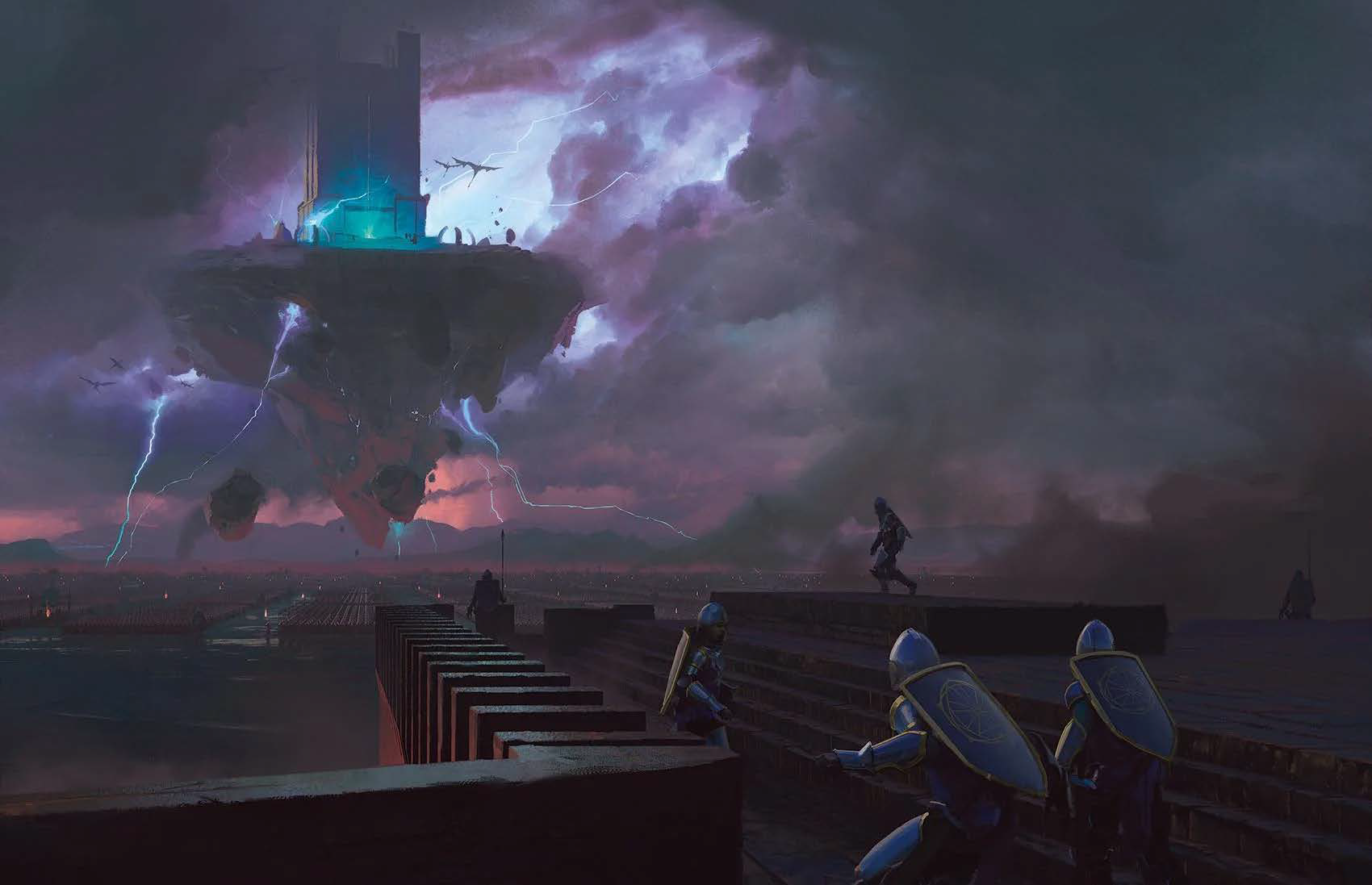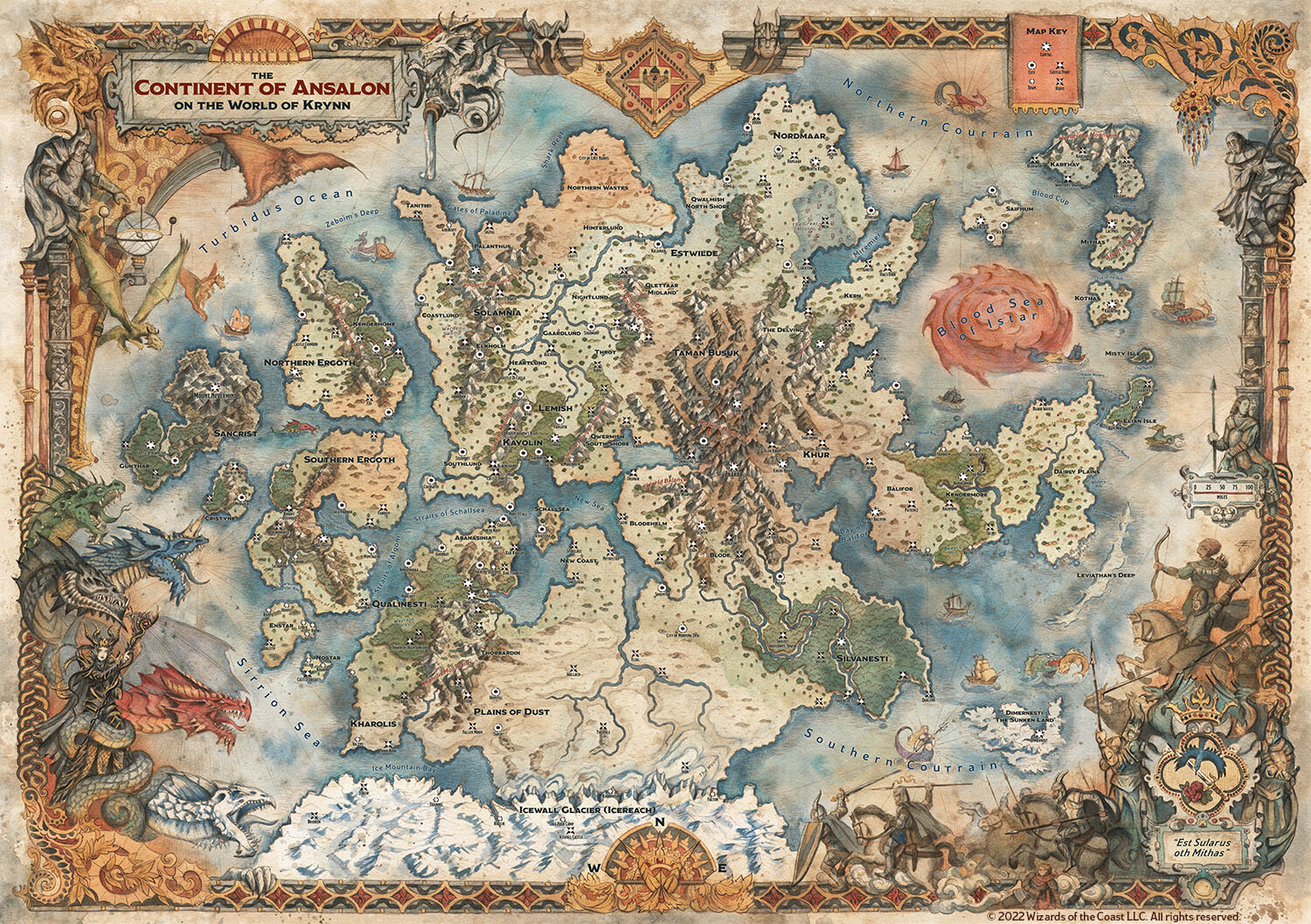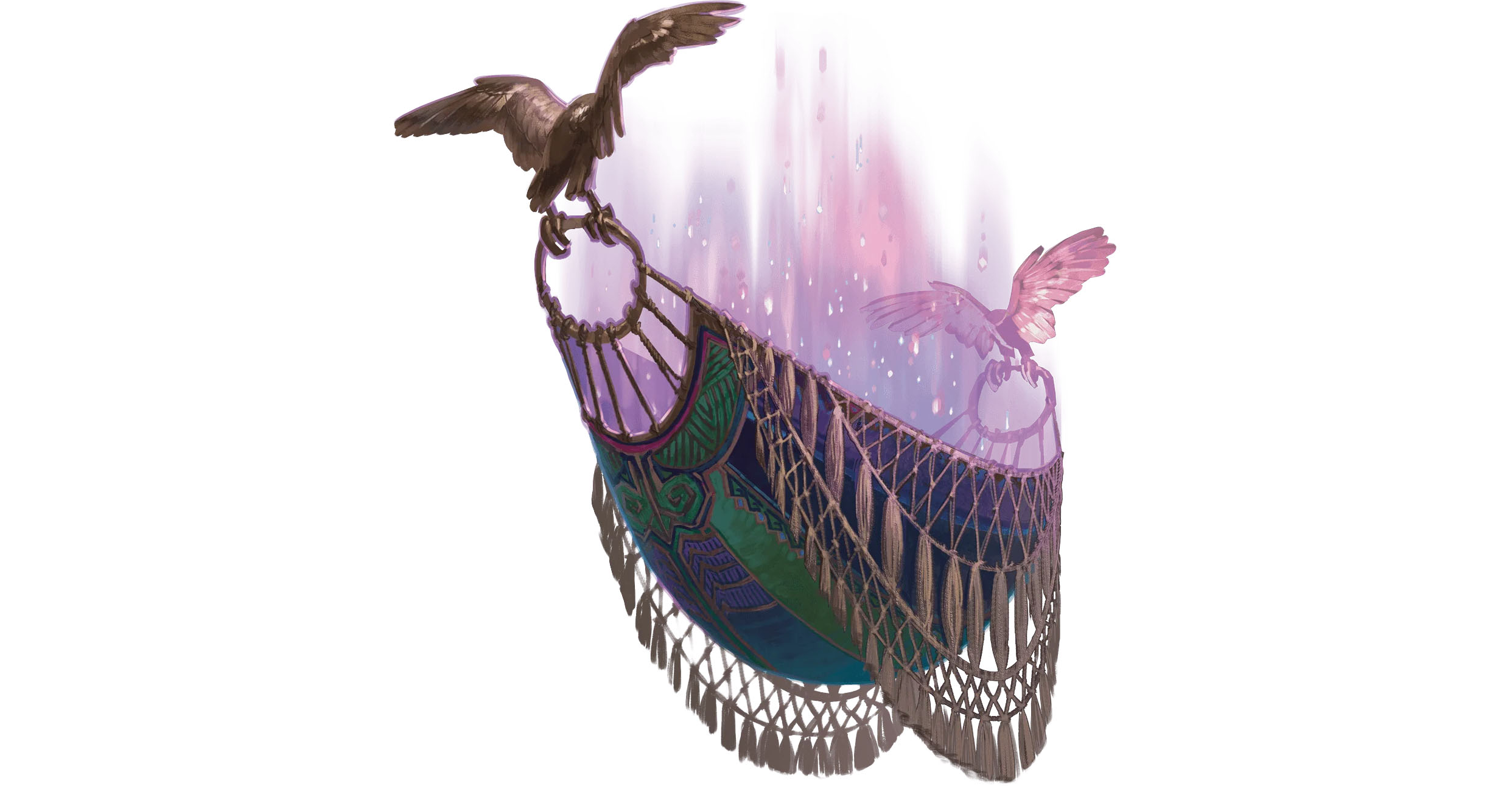Has the Candela Obscura Quickstart convinced me to run the game? And will it convince you? Should you take the time to check out this new roleplaying game from Critical Role and Darrington Press? Why is Candela Obscura a game afraid of its own shadow? ENnie Award-winning designer Justin Alexander dives into the controversy.
Archive for the ‘Reviews’ category
Video Review: Candela Obscura Quickstart
Review: Shadow of the Dragon Queen – Part 2
TO WAR!
Shadow of the Dragon Queen takes place during the Siege of Kalaman.
No, not the Siege of Kalaman in 352 AC where Laurana is the general and the Dragon Armies deployed their flying citadels for the first time. This is an earlier Siege of Kalaman that takes place in 3-mumble-mumble AC, when a completely different flying citadel showed up for the first time, shredding absolutely everything we know about this continuity.
Ironically, I think Kalaman was chosen for this campaign because so little was established in the Dragonlance Saga about what happened there during the War of the Lance. Across all fourteen of the original modules, there’s only like a dozen paragraphs you would have to keep track of to keep things consistent, so it’s almost impressive in a way that they nevertheless managed to screw it up.
(I’ll stop calling out rotten continuity at this point, for that way lies madness.)
The other reason to set a campaign here is that Kalaman is basically the point closest to the Dragon Armies at the beginning of the War of the Lance which is NOT conquered by them. Go any closer to the draconian homelands and the PCs can’t save the day. Go any farther away and you can’t get away with telling a story of the early days of the war where people are still coming to grips with the true nature of the Dragon Queen’s threat.
The point is that Shadow of the Dragon Queen is set in the heart of a war, and the PCs will be no strangers to the battlefield. Over the course of the campaign, there will be twelve major battles that the PCs will be part of, and you’ll have two options for handling them.
First, as I mentioned, there’s the Warriors of Krynn boardgame, which contains each of those battles as individual scenarios. I’m likely going to do a separate review of the board game and will take a closer look at how it integrates with Shadow of the Dragon Queen there.
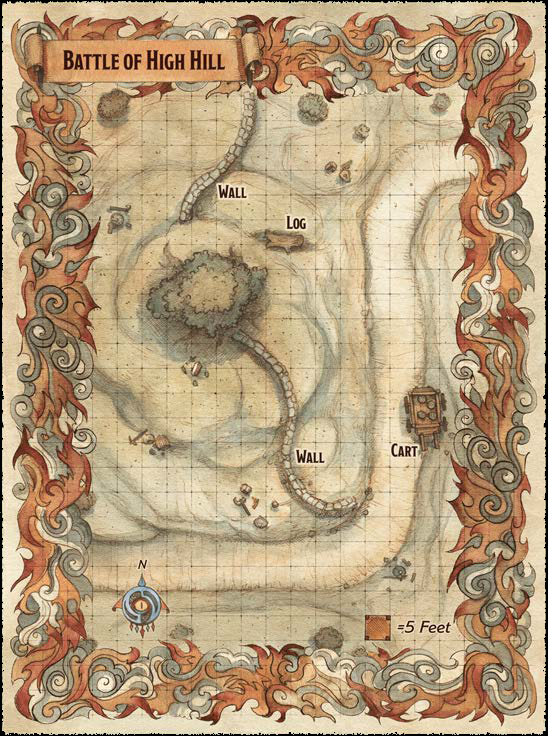 But you don’t need to buy Warriors of Krynn to run Shadow of the Dragon Queen. The book includes a system of battlefield encounters which can be run as standard D&D combats. These consist of four parts:
But you don’t need to buy Warriors of Krynn to run Shadow of the Dragon Queen. The book includes a system of battlefield encounters which can be run as standard D&D combats. These consist of four parts:
The battlemap. These are gorgeously rendered and are roughly the dimensions you’d expect in any other D&D battlemap.
Notably, however, the battlemaps have a 15-foot rim on all sides referred to as the fray. This is the first way in which these battlefield encounters represent the chaotic melee swirling around the PCs: Each fray has unique properties, generally being difficult terrain and requiring a saving throw to avoid damage if a character enters the area.
There are also the battlefield events, which occur randomly whenever a character enters the fray or at initiative count 0 on each round. These include things like:
- A volley of arrows falls on a random character’s position.
- Low-flying dragonnels flee across the battlefield.
- A draconian dragon rider falls from their mount, plummeting out of the sky and landing on the battlefield.
- An injured member of the PCs’ army crawls onto the battlefield, begging for aid.
Finally, of course, there’s the encounter itself. Sometimes this is a single group of bad guys; in other cases there’ll be a scripted sequence with additional bad guys showing up over time. Either way, when the bad guys are all defeated, the encounter (and the wider battle) come to an end.
This seems like a really simple structure, but conceptually it packs a big punch. There’s a lot you can do with just these few simple tools to bring radically different battlefields to vivid life in your campaign.
The one thing I would like to be able to say is that the outcome of these battlefield encounters have an effect on the outcome of the wider battle. Unfortunately, that’s not the case. Which is perhaps unsurprising, because…
ALL ABOARD, FOLKS!
… the campaign is horrendously railroaded.
By which I mean both that the railroading is relentless and all-encompassing, but also that the methods they use to force the railroad down your throat are just hopelessly awful.
Phrases such as “encourage the characters to” and “it’s up to the characters to…” and the like seem to be the book’s favorite ways to signal the DM that the time has come to take the character sheets away from the irresponsible players.
Different people will have different reactions to this kind of stuff, but for me the absolute worst type of railroading is when the DM takes control (directly or indirectly) of what your character says. (Because, honestly, what’s left at that point? We’re literally just sitting at the table watching someone awkwardly talk to themselves.) And Shadow of the Dragon Queen absolutely loves this.
For example, the PCs have been railroaded into a debate with NPC military commanders about what the next logical course of action should be. The NPCs make their arguments, and then the DM is instructed to:
…encourage the characters to make the case that Lord Soth is a threat and the Dragon Army’s plans to the north shouldn’t be taken lightly.
But then the writers think to themselves, “Maybe the players won’t take the hint from the clue-by-four we’ve smashed into their faces. Or maybe the Dungeon Master won’t have the guts to put the gun to their heads and keep them in line.”
The answer, of course, is to cue up a GMPC. So, for example, even after you’ve “encouraged” the players to say their scripted lines, it’s an NPC who swoops in and gets to be the hero of the scene:
Darrett then asks Vendri to let him take the characters and a contingent of troops into the Northern Wastes to investigate whatever the Dragon Army wants there. [Vendri] asks the PCs to leave while she and Darrett discuss details…
I cannot emphasize enough that this is not one or two isolated incidents: It is the entire campaign. Just an endless, mind-numbing litany of blow-by-blow descriptions of how the authors anticipate/demand each scene be played out.
“The NPCs will say. Then the PCs will say. Then the NPC will say. Then the PCs will say.”
This is interspersed liberally with “the PCs can roleplay or they can make a Persuasion/Intimidation/whatever check,” which (a) is just bad praxis (rolls and roleplaying work together; it’s not either-or) and (b) is completely pointless anyway, because the check result never seems to vary how the conversation plays out!
And I just want to take a moment to say something truly from the bottom of my heart:
Fuck Darrett.
This prick gets attached to the PCs like a cancerous mole early in the campaign. He tags along as a sidekick squire, but then, suddenly, he’s the main character: It’s him, not the PCs, who gets promoted based on their adventures together. It’s him, not the PCs, who’s scripted to save Lord Bakaris’ life. Before you know it, he’s the PCs’ boss, ordering them around, making all the important decisions, and continuing to scoop up all the accolades.
So, again: Fuck Darrett.
And there’s basically an endless parade of these jackasses through the entire campaign.
 About midway through the book, for example, Darrett says, “See that huge hexmap over there? I’m going to stay here on the boat. Y’all go and explore for a while!” For one glorious moment, the players will rejoice! The fetters have come off! Not only do the PCs finally get to ditch Darrett, they’ll be in control of their own destiny! They’ll get to make their own choices!
About midway through the book, for example, Darrett says, “See that huge hexmap over there? I’m going to stay here on the boat. Y’all go and explore for a while!” For one glorious moment, the players will rejoice! The fetters have come off! Not only do the PCs finally get to ditch Darrett, they’ll be in control of their own destiny! They’ll get to make their own choices!
Except no. Because the authors are so terrified of the players having the slightest bit of agency that literally eight paragraphs later a brand new GMPC pops up with detailed instructions on EXACTLY THE ORDER IN WHICH YOU WILL CONDUCT YOUR “EXPLORATION!”
There’s even a little scene so that, if the PCs are confused about who their new master is, Darrett will helpfully explain it to them.
The whole thing is so grotesquely pointless that it almost feels as if the authors are being deliberately petty. As if they have some personal grudge against the players.
THE BORING BITS
As I look over my notes for Shadow of the Dragon Queen and flip through the book to refresh my memory, I can see that it’s studded with big, impressive set pieces:
- huge battles,
- dragonriding duels,
- flying cities,
- gnomish siege weapons,
- ruined cities,
and more!
Just looking through this list, it seems as if this campaign should be a thrill-fest from one end to the other.
So why did I find the book so utterly stultifying to read?
Largely because the medium is the message. When I read an adventure book like this, what I’m thinking about is the experience of running it at the table. And the picture Shadow of the Dragon Queen paints of the actual play experience isn’t a pretty one.
Yeah, the set pieces are shiny and cool in an abstract sense. But when I’m reduced to a mute audience either watching somebody else do all the cool stuff or stuck as a helpless puppet unable to have any effect on what’s happening, they lose their luster.
For example, consider the big finale of the campaign:
First, the PCs fight and fight and fight and fight to prevent the bad guys from taking control of the flying citadel!
And it doesn’t matter, because an unskippable cutscene is triggered and they’re forced to just watch while the bad guy activates the flying citadel helm.
But that doesn’t matter, either, because it doesn’t work and the citadel is falling apart all around them!
But that ALSO doesn’t matter, because after the PCs escape from the collapsing citadel, they turn around and see a different bad guy flying off in a completely different citadel!
Whoopsie-doopsie!
You can almost be impressed by the skill it takes to build up so many levels of irrelevancy. (Almost.) But they aren’t even done!
See, the PCs might think to themselves, “We’ve gotta stop the other citadel!” and rush to do that. That’s not the plot, though, so the DM is instructed to use endlessly respawning death dragons “that attack until the characters retreat.” The defenses are too strong! All you can do is watch helplessly while dragonnels ferry troops from the ground into the citadel!
Three pages later, though, after the entire dragon army has transferred itself into the flying citadel and its defenses are even more impregnable? Now it’s time to attack, and so a gaggle of GMPCs show up and give the PCs their marching orders.
Sure, after all that, the dragon-riding duel with Dragon Highmaster Kansaldi Fire-Eyes (complete with pre-scripted conclusion) has a cool illustration, but I honestly find it impossible to get legitimately enthused about it.
When the book goes to such elaborate lengths to scream, “THIS IS ALL POINTLESS AND NOTHING YOU DO MATTERS!” eventually you believe it, no matter how pretty the two-dimensional set painting is.
Grade: D-
Project Lead: F. Wesley Schneider
Writers: Justice Arman, Brian Cortijo, Kelly Digges, Dan Dillon, Ari Levitch, Renee Knipe, Ben Petrisor, Mario Ortegon, Erin Roberts, James L. Sutter
Publisher: Wizards of the Coast
Cost: $49.95
Page Count: 224
A guide to grades here at the Alexandrian.
Review: Shadow of the Dragon Queen
Meh.
When Dragonlance: Shadow of the Dragon Queen was announced, I was really excited about it. So excited, in fact, that I ended up spending most of the summer and beyond doing a deep dive into the Dragonlance Saga. I was excited about the campaign returning to the War of the Lance, the time period of the original Saga (and accompanying Chronicles trilogy). I was excited about Stephen Baker (designer of great mainstream wargames) and Rob Daviau (father of the legacy board game genre) joining forces to design Warriors of Krynn, a companion wargame that was designed to be played in conjunction with the campaign.
What an amazing opportunity to reinvent the bond between wargaming and roleplaying that has been part of D&D’s legacy from the very beginning! And, more than that, an opportunity to triumphantly realize the unfulfilled promises of the original Saga!
Plus it was coming out within mere days of my birthday! What a fun little birthday treat! I didn’t hesitate at all in preordering the Deluxe Edition that bundled the D&D campaign and board game together into one package.
So when the book showed up at the beginning of December I didn’t hesitate for a moment in ripping open the box— (Literally. The Deluxe Edition box is incredibly fragile and basically impossible to open without destroying it. Bizarrely, it’s apparently deliberately designed to be disposable.) —and flipping open the book.
Of course, I was still excited! Just completely engaged with the book. There’s some nifty little player handouts in the first chapter that are designed as missives from various NPCs to the PCs as an introduction to the setting, and I recorded some dramatic readings of those, thinking they’d be cool to send to my players as little teasers.
But then I found myself reading the book less and less. At first I thought it was just the holidays keeping me distracted, but by the end of the month it was clear that Shadow of the Dragon Queen had become a slog for me. It was frustrating and, even worse, it was boring.
And then the OGL crisis hit, with Wizards of the Coast flipping off the entire hobby and promising to detonate a devastating nuclear bomb in the middle of the industry. As I dealt with the professional and personal fallout from that, I wasn’t really in the mood to read any D&D books (and it wouldn’t really have been fair to the book), so I laid it aside. Fortunately, the OGL crisis eventually resolved itself in perhaps the best way anyone could have reasonable hoped for, and so, in February, I eventually picked up Shadow of the Dragon Queen again.
… and it was a still a miserable slog.
To a large extent, the simple fact that I have only just now, at the end of April, managed to drag my carcass to the final page of the book, is a pretty accurate summary of my entire review.
IS THIS BOOK FOR YOU?
The original Dragonlance adventures, published in the 1980’s, sought to bring the power of a true fantasy epic to Dungeons & Dragons. It plunged the players into the world-spanning epic of the War of the Lance, in which the evil draconians of Takhisis, the Dragon Queen, formed the Dragon Armies and invaded the realms of Ansalon, positioning the PCs to change the course of history.
Shadow of the Dragon Queen is set during the earliest days of the war, ostensibly serving as a prequel or sidequel of sorts to the Dragonlance Saga. Part of the appeal of a ‘quel narrative like this, of course, is seeing how the continuity meshes with the existing work. When done well, as in the early issues of Kurt Busiek’s Untold Tales of Spider-Man or Tom Stoppard’s Rosencrantz & Guildenstern Are Dead, you get an exciting bit of frisson whenever you see a character walk off stage left, knowing that they are simultaneously walking on stage right in a different story. Like a great heist movie, there is a kind of puzzle-solving delight in seeing the pieces come together, plus a real opportunity for depth and meaning that resonates beyond the immediate boundaries of what you’re creating.
The problem, though, is that Shadow of the Dragon Queen cares so little for the established continuity of Dragonlance or the War of the Lance that it’s a complete turn-off for any Dragonlance fans who would be interested in that sort of thing.
For example, the fact that several hundred years ago the True Gods abandoned the world of Ansalon during the Cataclysm and have not been heard from since is a really big deal. It’s a central tenet of the Dragonlance setting, a crucial element of the War of the Lance, and something which, in my opinion, is part of what makes the original Dragonlance Saga something special and unique in the annals of D&D. The quest to find the True Gods and restore the divine magic of clerics is, in fact, a really big part of the Saga.
So when it became clear to me that Shadow of the Dragon Queen was set in a time period before the True Gods returned to Ansalon, I was really curious: How were the designers going to deal with the fact that clerics canonically (pun intended) don’t have their spells?
And the designers’ provided a truly epic answer:
“Eh… fuck it.”
The book provides a short dream sequence. If a player creates a cleric, the DM basically says, “A god appears to you in your sleep! So I guess all that stuff that happens over in the Saga was completely pointless! Woo-hoo!”
The fact that the designers really couldn’t give a fig about this is really underlined by the fact that the FIRST TRUE CLERIC TO BE SEEN IN CENTURIES is just… kind of irrelevant? There’s one oblique reference to an NPC being impressed if the PCs have healing magic and that’s it.
Okay, so existing Dragonlance fans aren’t the target audience here. None of that continuity crap matters because this campaign is being written for new fans! Shadow of the Dragon Queen is their introduction to the wonderful world of Dragonlance, and it’s fine if stuff doesn’t match up perfectly up with the old stuff.
… except Shadow of the Dragon Queen kinda sucks as an introduction to Dragonlance.
The setting “gazetteer” (if you’re willing to call it that) is just fifteen pages long, and six of those are dedicated to short descriptions of every god. There’s an absolutely stunning poster map of Ansalon by Francesca Baerald, but most of the locations listed on it are not given even the briefest of descriptions.
From a player’s perspective it’s probably a slightly better experience, but I honestly don’t know how any DM would be expected to run the setting with confidence based on the information (or, more accurately, the lack of information) given here.
So if the book shows a careless disregard for the old fans and is completely inadequate for the new fans… who is it for, exactly?
Review: Dungeons & Dragons – Honor Among Thieves
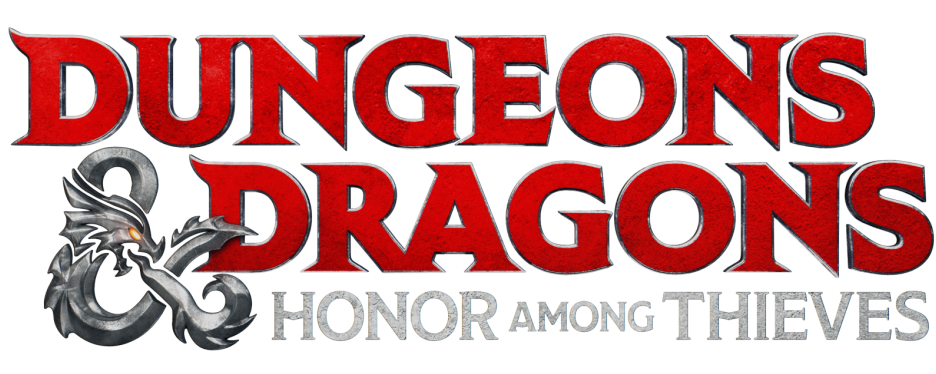
One is always tempted to write something like, “This is the perfect D&D movie.”
But such a statement almost immediately raises the question: What would the perfect D&D movie look like? Would it be a Temple of Elemental Evil dungeon crawler? The gothic horror of Castle Ravenloft? The epic fantasy of the Dragonlance Saga? An isekai like the animated series? A remake of Cube in the Tomb of Horrors?
So let us instead say that this is A perfect D&D movie.
Normally when I review films, I try to avoid discussing anything in detail after the first fifteen minutes without a spoiler warning. But Honor Among Thieves challenges that policy because the first fifteen minutes is so packed with action, character development, and insanely clever narrative layering that it feels a bit unfair to you to lay it bare. (If you’re not completely onboard with the film by the end of the first fifteen minutes, then you’re probably going to be in for a rough ride.) So I’m just going to mention a few key points and then we’ll head into spoiler territory:
- This movie feels like playing in a truly great D&D campaign in the best possible way.
- Daley & Goldstein, along with co-writer Michael Gilio, have crammed a truly insane amount of D&D lore into this film, and not once does it feel forced or self-indulgent.
- It’s simply a joyful experience, but also one that has a legitimate emotional core. I legitimately teared up at the end, because the film had been so successful at getting me invested in its characters.
If you are any sort of D&D fan — or even if you just enjoy fun fantasy films — then you owe it to yourself to go see this movie.
SPOILER WARNING!
Honestly, I think the scene that best captures what this film is about is the speak with dead sequence: The heroes need to learn what happened on a battlefield a few hundred years ago, and so they start digging up corpses.
The scene starts with Holga, the barbarian played by Michelle Rodriguez, talking about how she always dreamed she would be buried in holy ground like this. The emotional beat lands, in large part because it flows directly out of the previous scene, and also serves to pivot us into the first speak with dead:
Simon: I read this incantation. Once the dead man is revived, we can ask him five questions, at which point he will die again, never to return.
(…)
Edgin: Here we go. Were you killed in the Battle of the Evermoors?
Corpse: Yes.
Edgin: Four more questions, right?
Corpse: Yes.
Edgin: No, that one wasn’t for you. Did that count?
Corpse: Yes.
Edgin: Dammit. Only answer when I talk to you, OK?
Corpse: Yes.
Simon: Why would you say “okay” at the end of that sentence?
Corpse: I didn’t.
(The corpse dies.)
This isn’t the best scene in the movie. (It would be hard to pick one. There are so many great scenes in this film.) But it showecases everything the film does well:
It is constantly developing characters, which is what allows it to have four fully developed character arcs plus another three or four vividly realized members of the supporting cast.
It achieves that wild blend of irreverent comedy, monstrous horror, and heartfelt epic that characterize many of the finest D&D campaigns.
It does a simply brilliant job of capturing iconic moments from the game table and putting them onscreen in a way that honors and celebrates them, while also making them completely accessible and fun and thrilling even if you’ve never played a session of D&D in your entire life.
“But she turns into an owlbear, Justin! I’ve seen the trailer! That’s clearly not allowed by the rules!”
Okay, first: Get the fuck out. You don’t deserve nice things.
And second: Yeah, that’s fucking right. The movie even has house rules. How could it be an authentic representation of D&D if it didn’t?
It even manages to somehow feature an honest-to-gods GMPC (played by Regé-Jean Page) for a dozen or so scenes.
My one and only real critique of the film is that I would’ve liked it to have been daring enough (or, at least, empowered enough) to actually shake up the status quo in the Forgotten Realms. Instead, everything needs to be more or less tucked back where it belongs at the end of the film. (On the other hand, I guess I’m also glad D&D’s lore is still being driven by the RPG and not by the feature film.)
In any case, I’ll be heading back to the theater to see it again next week, which will make it the first film I’ve seen twice in theaters since the pandemic started. I don’t think I can really give it a better recommendation than that.
GRADE: B+

Review: Radiant Citadel – Part 7
ORCHIDS OF THE INVISIBLE MOUNTAIN (Terry H. Romero): I actually quite like this scenario, and I’d like you to keep that in mind while I discuss its two major problems. (Then we’ll cycle back around to the good stuff.)
First, there’s a trend I’ve seen in Wizards of the Coast adventures — particularly in their anthologies — of designing a scenario hook that offers an intriguing enigma for curious players to investigate, but then immediately having an NPC show up who barges in, orders the PCs to investigate it, and gives them a specific checklist of tasks to complete. Frequently, this NPC will also just immediately explain the enigma, robbing the adventure of any sense of discovery, but nevertheless leaving the busy work.
“Look, I’m going to be perfectly honest with you,” the DM says. “I think you’re all idiots and incapable of taking any action unless someone is literally holding you hand. Hang on a sec, let me wipe the drool off your chins.”
In the case of “Orchids of the Invisible Mountain,” it feels particularly weird because the strange enigma is literally an NPC ordering the PCs to do a thing. And then another NPC shows up so that they, too, can order the PCs to do the exact same thing.
It’s like you’re stuck in some kind of middle-management hell.
The second problem with “Orchids of the Invisible Mountain” is what I refer to as scale mismatch.
“Orchids” wants to be an epic fantasy quest. It wants the vast scope and epoch-shattering consequences of The Lord of the Rings as the PCs journey forth on a grand expedition across many worlds, interacting with legendary characters and god-like beings.
But, on the other hand, it’s fifteen pages long.
It’s basically impossible for adventures like this to achieve their lofty goals, and so they end up feeling hollow and forced. You can’t squeeze Frodo’s journey to Mordor into a one-shot and expect it to have the same weight.
(There’s also a sad little bit where the text basically says, “If the PCs have plane shift, of course, they can just skip most of this adventure.” This feels like somebody in the development process realized there was a calibration problem between what the adventure expected and what 14th-level characters are actually capable of, but it was too late to actually fix it. You can see a similar calibration problem near the beginning of the adventure, where the text confidently states that the PCs will have no way of stopping a barn fire.)
You can see a dramatic example of this scale problem in action with this map of a “mountain” which is… what? About a hundred feet across?
Having said all that, the reason I’m rather fond of “Orchids” is that it’s actually remarkably effective at evoking the epic scale it’s grasping for. Far more so than any similar module I’ve seen. It achieves this primarily by just daring to dream vividly, conjuring forth dream-hazed visions that are startlingly memorable by virtue of being both unique and drawn in specific detail.
“Orchids” will take you:
- Through a burning sugar plantation.
- Across the thri-keen-haunted Grassroads.
- Into a giant termite mound which is also a thinning between this world and the Feywild.
- Up the jungle-tangled slopes of the Ghost Orchid Tepui.
- Into the Crystal Caves where the Sleeping Stone is guarded by an aboleth-cursed dragon.
- The husk of the Drought Elder, an alien god of the Far Realm whose consciousness echoes through its own dead skein.
Along the way they’ll meet:
- The Sugar Man, an ebullient leader of the people of Atagua.
- A thousand-year-old spirit kept alive by the whim of the Feywild.
- An iridescent thri-keen.
- The Dawn Mother, an ageless giant striding out of legend.
There’s nothing generic here. It’s all fantastical and wonderful and strikingly imaginative, hampered only by the necessity of its just-in-time-exposition: The PCs need to go to the Dawn Mother, and so now we’ll tell them about the Dawn Mother for the first time.
“Orchids of the Invisible Mountain” would be much more powerful if the seeds of its lore were planted much earlier in your campaign. (It’s just so much cooler if the players have known about the legends of the Dawn Mother for a long time, and now they get to actually meet her!) Planting those seeds would mean doing a lot of groundwork.
But “Orchids” just might be worth it.
Grade: C+
CONCLUSION
As with my review of Candlekeep Mysteries, what I’m looking for in an anthology is not necessarily a home run with every entry. I’m much more interested in how much good stuff the anthology offers me. It’s fairly easy to just ignore the stuff that doesn’t work.
Bearing that in mind, let’s take a peek at the hit rate for Journeys Through the Radiant Citadel:
Salted Legacy C+
Written in Blood A
The Fiend of Hollow Mine C+
Wages of Vice D
Sins of Our Elders C-
Gold for Fools and Princes F
Trail of Destruction D-
In the Mists of Manivarsha C
Between Tangled Roots B
Shadow of the Sun F
The Nightsea's Succor B+
Buried Dynasty F
Orchids of the Invisible Mountain C+
Anything with an A or B grade is an adventure I would definitely run. Stuff with a C grade I’m more skeptical of, but are likely salvageable if you particularly like the concept or content.
So of the thirteen adventures we have:
- 3 that I would definitely run;
- 5 that could be salvaged with a little TLC; and
- 5 that I think are a complete miss.
It’s clear from these numbers that this is a weaker anthology than Candlekeep Mysteries (which scored 8/4/5 on this metric). But this is a pretty good showing for an anthology like this, and when you combine it with the gazetteer for the Radiant Citadel itself — which I simply adore — I can easily recommend Journeys Through the Radiant Citadel as a solid value.
Style: 4
Substance: 3
Project Lead: Ajit A. George, F. Wesley Schneider
Writing: Justice Ramin Arman, Domnique Dickey, Ajit A. George, Basheer Ghouse, Alastor Guzman, D. Fox Harrell, T.K. Johnson, Felice Tzehuei Kuan, Surena Marie, Mimi Mondal, Mario Ortegón, Miyuki Jane Pinkcard, Pam Punzalan, Erin Roberts, Terry H. Romero, Stephanie Yoon
Rules Development: Jeremy Crawford, Makenzie De Armas, Ben Petrisor, Taymoor Rehman
Publisher: Wizards of the Coast
Cost: $49.95
Page Count: 224
FURTHER READING
Journeys Through the Radiant Citadel: A List of Names
Review: Candlekeep Mysteries
Archives
Recent Posts
- Ex-RPGNet Review: The Malady of Kings
- Advanced Gamemastery: How to Run Horror RPGs
- The Vladaam Affair – Part 16E: Slave Trade Handouts
- Ex-RPGNet Review: A Lion in the Ropes
- Ptolus: Running the Campaign – Contract Handouts
Recent Comments
- on Review: Heroes of the Borderlands (D&D Starter Set 2025)
- on Review: Heroes of the Borderlands (D&D Starter Set 2025)
- on Thought of the Day: Elven Teeth
- on In the Shadow of the Spire – Session 48A: A Night in the Necropolis
- on The Art of the Key – Part 4: Adversary Rosters
- on Random GM Tip – Running Background Adventures
- on In the Shadow of the Spire – Session 47C: Home Suite Home
- on The Secret Life of Nodes – Part 5: Naturalistic Node Design
- on Review: The Shattered Obelisk
- on Three Clue Rule

